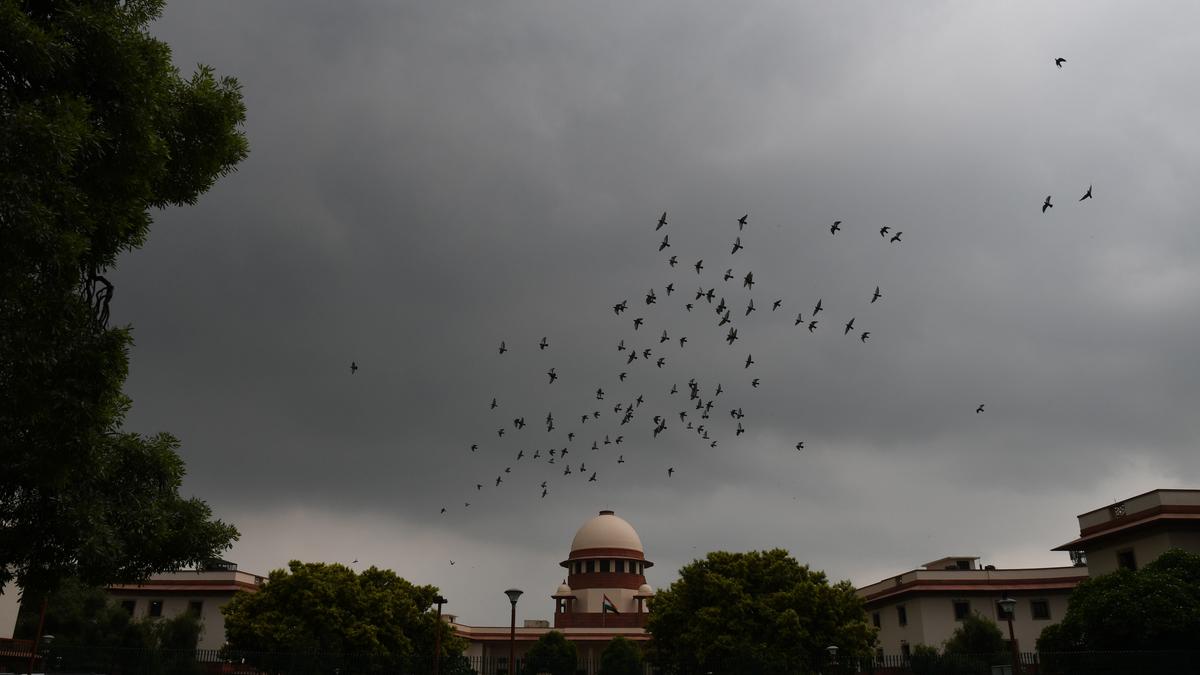Two Cheers for the Top Court’s ‘Bulldozer’ Judgment (GS Paper 2, Governance)

Context
- In a significant judgment, the Supreme Court of India recently addressed the controversial issue of unlawful demolitions, which have come to be known as the "bulldozer raj."
- This practice, prevalent over the past few years, involved demolishing the homes of individuals accused of various offenses, often amid communal tensions and unrest.
- These demolitions were frequently carried out in the wake of protests, particularly those linked to the Citizenship Amendment Act (CAA) and the National Register of Citizens (NRC).
- The Court condemned this practice, asserting that it violated core constitutional principles such as the rule of law and separation of powers, transforming the executive into a judge, jury, and executioner.
- The ruling is seen as a significant step in curbing the misuse of state power but raises several questions and concerns regarding its broader implications.
Key Issues Raised by the Judgment
Delay in Action:
-
- Despite the bulldozer demolitions starting in the context of protests against the CAA and NRC in 2019, the Supreme Court took more than three years to intervene.
- This delay has sparked criticism about the Court’s timing in addressing these unlawful demolitions.
- The judgment also raises important concerns about whether victims of past demolitions will receive compensation or legal redress.
- While the judgment holds state officials personally liable for unlawful demolitions, it does not clearly outline if or how this principle should be applied retroactively, leaving many victims without clear recourse.
Two-Faced State Justifications:
-
- Politicians and public officials have often celebrated demolitions as a form of "instant justice", particularly when targeting individuals accused of crimes.
- However, in legal settings, municipal authorities have defended these actions by citing the need to address illegal or irregular constructions.
- The Court acknowledged that some demolitions appeared to have been selectively targeted or even amounted to collective punishment, but it did so in a hypothetical manner, rather than addressing these instances as factual issues.
- This has led some critics to argue that the Court has not fully engaged with the material reality of the demolitions, where mala fide (bad faith) actions are apparent.
Guidelines to Prevent Misuse:
The Supreme Court has outlined a set of guidelines designed to prevent the abuse of demolition powers in the future. These include:
-
- Transparency and Due Process:
- Authorities are now mandated to serve a 15-day notice to individuals before any demolition, providing them with a chance to respond.
- A personal hearing must be conducted before any action is taken, allowing the affected parties an opportunity to defend their position.
- An appeal period of 15 days will be available after the final demolition order is issued.
- These steps aim to ensure that demolitions are carried out only after due process is followed, reducing the likelihood of arbitrary and immediate action.
- Proportionality in Action:
- Municipal authorities will be required to justify why demolition is the only option available. Alternatives, such as regularisation or partial demolition, must be considered before resorting to full-scale destruction of property.
- If officials fail to comply with these requirements, they will be held personally liable for any wrongful demolitions, a provision designed to hold government actors accountable.
- Measures Against Backdating Notices:
- The Court introduced measures to ensure transparency in the process, particularly by preventing fraudulent backdating of notices. This aims to increase accountability and prevent the manipulation of legal documents to legitimize demolitions.
Implementation and Challenges
- While the Court's guidelines represent a step forward, implementation remains a critical issue.
- Past instances, such as those dealing with hate speech and lynchings, have seen the Court issue guidelines, but enforcement has often been weak, rendering many of these measures ineffective.
- The success of these new guidelines depends on the commitment of local authorities and lower courts to implement them consistently.
- Without proper enforcement, the risk of arbitrary demolitions remains.
Exclusion of Vulnerable Groups
- One of the most significant limitations of the judgment is its exemption of structures on public land, including those on railway tracks and roads.
- This leaves slum dwellers and other marginalized communities particularly vulnerable to forced evictions.
- These groups, who often live in informal settlements, are at the greatest risk of losing their homes without any legal recourse.
- The judgment's failure to address the right to shelter for these vulnerable groups underscores a critical gap.
- For many, the threat of eviction is constant, and this decision leaves their protection largely unaddressed.
Conclusion
- The Supreme Court’s judgment represents an important milestone in curbing the misuse of demolition powers for political purposes, providing much-needed safeguards for individuals facing unlawful evictions.
- The guidelines on due process, proportionality, and accountability are significant steps toward ensuring that demolitions are carried out lawfully and transparently.
- However, the judgment falls short in several key areas, notably in providing redress for past victims and in offering stronger protections for vulnerable communities, especially those living in informal settlements.
- The struggle for the right to shelter, and ensuring that due process is applied equally to all citizens, remains ongoing.
- While the Court’s intervention is a necessary check on state power, its partial application means that further judicial and legislative steps will be needed to fully safeguard the rights of all individuals, particularly those most at risk of forced evictions.
- Therefore, the judgment deserves two cheers — it is a step in the right direction, but much more remains to be done to ensure justice for all.


